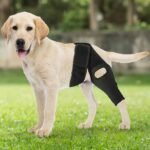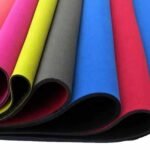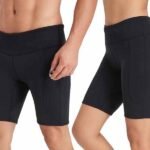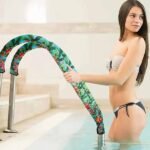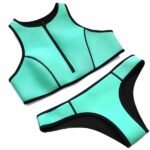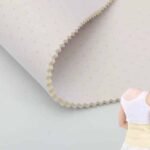Imagine this: it’s a hot summer day, and you’re reaching for a cold drink from the cooler. You slip it into a sleek, well-made koozie and feel the chill instantly preserved. You glance over, noticing others struggling with quickly warming cans, and smile knowing your choice of material makes all the difference. But how did you decide on the right koozie material in the first place?
When it comes to selecting the perfect material for your koozies, there’s more at stake than meets the eye. The right material not only keeps drinks colder longer but also represents your brand’s quality and reliability. If you’re a business looking to offer high-quality koozies to your customers, understanding the material options can help you make an informed choice.
What Makes A Koozie’s Material So Important?
The material used in a koozie is more than just a functional component—it plays a critical role in the product’s overall performance and perception. The right material ensures that drinks stay cool longer, improves the feel and look of the product, and adds to the durability. Additionally, the material you choose affects how easily you can add custom branding elements, such as logos or text.
Consider the environment in which your koozie will be used. For instance, outdoor events call for materials that can withstand moisture, sunlight, and wear-and-tear. Corporate settings may demand a more polished, professional appearance. The better the material aligns with your intended use, the more effective the koozie will be in keeping drinks cold and impressing your audience.
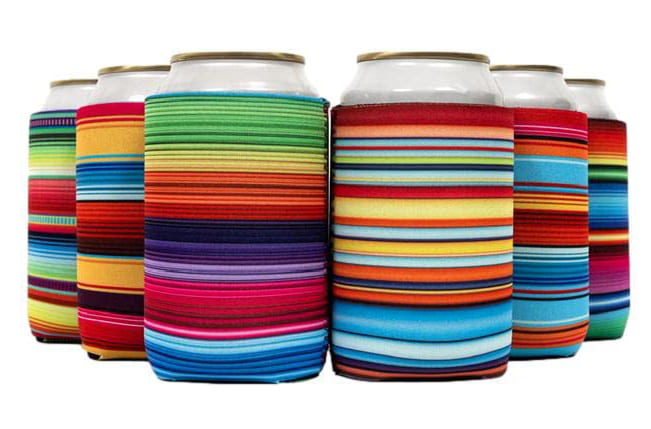
What Material Is Used For Koozies?
A variety of materials are commonly used for making koozies. Each type has its own advantages and trade-offs, depending on factors like budget, durability, and aesthetics. Popular materials include:
-
Neoprene:
Neoprene is known for its flexibility, excellent insulation, and water resistance. It’s a popular choice for premium koozies because it effectively maintains the temperature of cold drinks and feels soft and comfortable to hold. -
Foam:
Foam is lightweight, affordable, and easy to work with. While it doesn’t insulate as well as neoprene, it is cost-effective and widely used for promotional events where price is a key consideration. -
Fabric:
Some koozies are made with fabric, which provides a unique look and texture. While fabric koozies may not insulate as effectively as foam or neoprene, they can offer a stylish, upscale appearance that appeals to certain audiences. -
Vinyl or PVC:
Vinyl and PVC koozies are waterproof and easy to clean. These materials are less flexible than neoprene but offer excellent durability and a smooth surface for printing. -
Eco-Friendly Options:
As sustainability becomes more important to businesses and consumers alike, many companies are exploring recycled materials or biodegradable options. While these may come at a higher price point, they align well with eco-conscious branding efforts.
By understanding these material choices, you can determine which one is best suited to your business goals and customer preferences.
What’s The Best Can Koozie?
There isn’t a one-size-fits-all answer to the best can koozie—it depends on your priorities. For example:
-
Neoprene Koozies:
Considered by many to be the gold standard, neoprene koozies offer exceptional insulation and durability. They’re perfect for corporate giveaways, retail products, and outdoor events. The smooth surface is ideal for high-quality custom printing, making them a favorite among businesses looking to leave a strong impression. -
Foam Koozies:
Foam is a great budget-friendly option. While it doesn’t provide the same level of insulation or longevity as neoprene, it’s suitable for large events or short-term promotional campaigns. Foam koozies can still be customized with logos and designs, making them a cost-effective choice for spreading brand awareness. -
Fabric and Vinyl Koozies:
Fabric koozies are more niche, offering a textured look that can appeal to certain demographics. Vinyl or PVC, on the other hand, is highly durable and waterproof. These materials are often chosen for specialized applications where moisture resistance and longevity are top priorities.
When choosing the “best” can koozie, consider what’s most important to your audience and your branding goals. Neoprene often stands out for its overall performance, but foam and other materials can be better suited for specific circumstances.
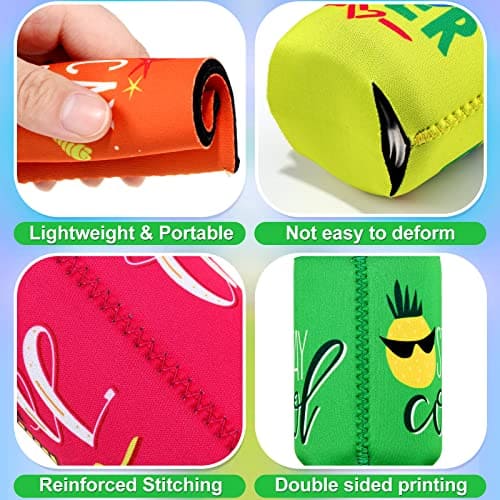
What Is The Difference Between Neoprene And Other Koozies?
Neoprene is often considered the gold standard when it comes to koozie materials, but how exactly does it stack up against other options like foam, fabric, or vinyl? Let’s take a closer look at the key differences:
-
Insulation Performance:
Neoprene is a synthetic rubber known for its excellent insulation capabilities. It retains cold temperatures more effectively than foam or fabric, which means drinks stay chilled longer. Foam, while also designed to keep beverages cool, tends to lose its effectiveness more quickly. Fabric koozies, on the other hand, provide very little insulation, making them more of a decorative choice than a functional one. -
Durability and Longevity:
One of neoprene’s biggest advantages is its durability. It resists tearing, stretching, and degradation over time. Foam koozies, while lightweight and affordable, can wear out after repeated use—especially if they’re crushed, folded, or exposed to heavy moisture. Fabric and vinyl koozies offer varying degrees of durability, but neoprene’s rubbery, flexible structure ensures that it holds up under frequent handling and washing. -
Water Resistance:
Neoprene is naturally water-resistant, making it ideal for outdoor events, beach parties, or situations where the koozie might get wet. Foam can absorb water if it’s not coated or treated, which can reduce its insulating properties and lead to a soggy feel. Vinyl is also water-resistant, but it lacks the flexibility and comfortable texture of neoprene. -
Customizability and Aesthetic Appeal:
Neoprene’s smooth surface and consistent texture make it perfect for sharp, high-quality printing. Logos, slogans, and intricate designs show up well, which is a major plus for brands looking to make a strong visual impact. Foam is also printable but doesn’t deliver the same level of clarity or vibrancy. Fabric koozies offer unique aesthetic appeal through embroidery or woven patterns, but they don’t provide the same versatility for detailed printed designs. -
Cost Considerations:
Foam koozies are typically the most budget-friendly option, making them a go-to for large-scale events or promotional giveaways. Neoprene, being more durable and higher-performing, comes at a higher price point. Vinyl or PVC koozies also tend to be more expensive than foam but less flexible and less comfortable than neoprene. For companies looking to strike a balance between cost and quality, neoprene often represents the best long-term investment—offering a professional look, excellent performance, and durability that justifies the higher upfront cost. -
Eco-Friendly Options:
While neoprene itself isn’t inherently eco-friendly, there are recycled neoprene options available. Foam and vinyl, on the other hand, have limited sustainable alternatives. Fabric koozies made from organic or recycled materials are more environmentally friendly, but they trade off some insulating ability and durability. For businesses with a strong focus on sustainability, exploring eco-conscious neoprene or fabric might be worthwhile, even if it comes at a slightly higher cost.
Below is a simple comparison table:
| Material | Advantages | Disadvantages |
|---|---|---|
| Neoprene | Excellent insulation, durable, flexible, water-resistant, smooth surface for printing | Higher cost than foam, limited eco-options |
| Foam | Lightweight, affordable, decent insulation | Less durable, prone to tearing, lower print quality |
| Fabric | Unique texture, stylish appearance | Limited insulation, higher production costs |
| Vinyl/PVC | Waterproof, durable, easy to clean | Less flexible, may feel stiff |
| Eco-Friendly | Sustainable, appeals to environmentally conscious customers | Higher cost, fewer customization options |
In summary, the primary differences between neoprene and other materials boil down to performance and appearance. Neoprene stands out for its exceptional insulation, durability, and printing quality, making it a premium choice. Foam is more affordable and still effective for shorter-term use, while fabric and vinyl have their own niches but don’t match neoprene’s overall balance of functionality and branding potential. By carefully considering these factors, businesses can make an informed choice that aligns with their product goals and audience preferences.
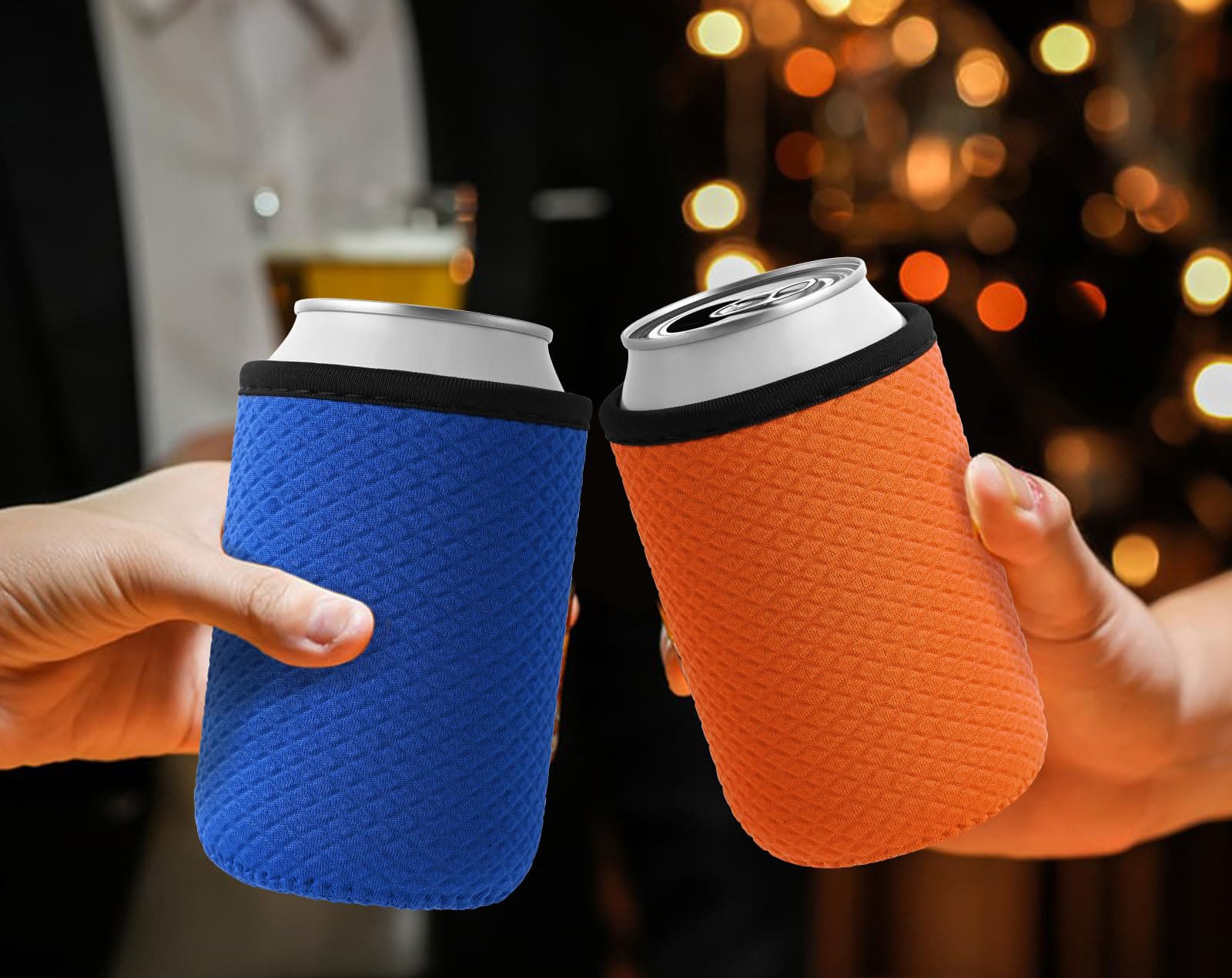
What To Consider When Choosing Koozie Materials?
When selecting a koozie material, keep these key factors in mind:
-
Insulation:
Different materials provide varying levels of insulation. If maintaining a cold beverage temperature is your top priority, materials like neoprene are a clear winner. -
Durability:
Will the koozie be used repeatedly or just once? Durable materials like neoprene are better for long-term use, while foam may be sufficient for single events. -
Cost:
Foam is budget-friendly, making it ideal for large-scale promotional events. However, if you want a more premium product, neoprene is worth the investment. -
Customization:
Consider how well the material works with printing, embroidery, or other branding techniques. Neoprene and foam generally offer more flexibility for customization. -
Eco-Friendliness:
If sustainability is important to your business, look for materials that are biodegradable or made from recycled sources. -
Customer Preferences:
Think about your target audience. For corporate clients, a sleek neoprene koozie may leave a better impression. For outdoor enthusiasts, a water-resistant material could be more practical.
How To Choose The Right Material For Your Koozies Branding?
Branding with koozies goes beyond functionality. The material you choose sends a message about your company’s values and commitment to quality. To align the material with your branding:
-
Reflect Your Brand’s Values:
If your company focuses on sustainability, select eco-friendly materials. If quality is your top priority, choose neoprene for its superior performance. -
Match Your Audience’s Needs:
Understand who your customers are. Outdoor event attendees may prefer durable, water-resistant materials, while corporate clients may appreciate a more refined look. -
Ensure High-Quality Customization:
Pick a material that handles logos and text well. Neoprene’s smooth surface allows for sharp, professional designs, while foam is more suited for simple prints. -
Balance Cost and Quality:
While foam is more affordable, neoprene’s long-lasting durability and higher-end feel can lead to better customer retention and stronger brand associations.
By choosing the right material, you can create a product that not only keeps drinks cold but also strengthens your brand image and builds trust with your customers.
Conclusion
The material you choose for your koozies impacts their performance, durability, and appeal. By understanding the strengths and weaknesses of each option—whether it’s neoprene, foam, fabric, or eco-friendly materials—you can make a well-informed decision that supports your branding goals. With the right choice, your koozies will not only keep drinks cool but also keep your customers coming back for more.
Szoneier is an experienced manufacturer of high-quality neoprene koozies and other custom products. With years of expertise, we offer personalized solutions to help your brand stand out. Contact us today to explore how our premium materials and professional craftsmanship can enhance your next promotional campaign.



